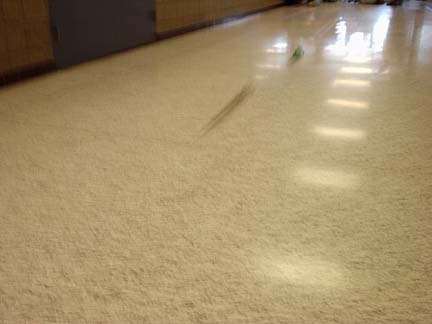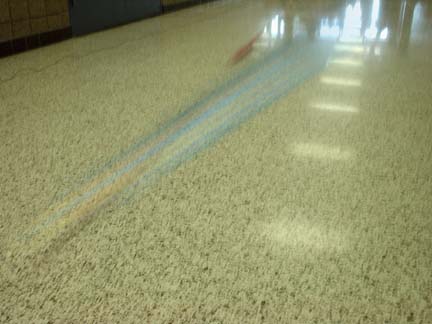
Poor Aerodynamics
Physics of CO2 Cars and Racing
| Home | CO2 Racing | Cars | Physics of CO2 Racing | Making your own CO2 Car |
Okay so, what exactly determines the outcome of each race? What makes the fastest car go so fast? Or the slowest car go so slow?
Well, there are a lot of factors that determine the performance of your car. They fall into these three basic categories.
For a race to be fair and organized, it has to have a Design Envelope. A Design envelope is the basic
set of limits for how small and how large a person's CO2 car can be in a given race. Normally, racers want their cars to be as small
as possible,so a minimum length of 8 inches is required in the design envelope. Width is usually not disputed.Builders try to make
their cars as small as possible to reduce as much weight as possible without sacrificing too much structural integrity.
Aerodynamics play a vital role in how well a CO2 car performs. Veteran racers spend hours
sanding their cars by hand to obtain aerodynamic perfection. An example of poor aerodynamics would be simply a square block with
wheels stuck on. An example of good aerodynamics would be a perfectly smooth bullet-shaped design. Airflow is also an important part
of aerodynamics. It is important that the builders make the sides and roof of their car as straight and smooth as possible. A car
with a straight, smooth, body and a sharp fore would perform well against a car with a curvy body and a sharp fore thus Air flow
is also essential for top speed.
Like real racing with real cars, there are certain types of
Mechanical tuning a racer can do to
his or her car prior to a race. Firstly, there is the texture of the car. Precise texture usually isn't that vital to worry about
in a shorter fifty or sixty foot track, but if you have a car that is ultra-light, and you are racing another ultra-light car
your car's body's texture may be the deciding factor. In national racing, professionals paint their cars multiple times to increase
the cars structural integrity, and protect the wood. They also sand after their first coat of paint is put on to make the wood as
smooth and aerodynamic as possible. Secondly, both axels of your car should be lubricated. By rubbing a graphite pencil lead against
the axel, you can add dry lubricant. Some students think it has no effect, but it has been proven otherwise. Below are two images
taken from the same location 1.5 seconds after the start of a CO2 time trial. Can you guess which car had better lubrication?

Poor Aerodynamics

Good Aerodynamics

Poor Airflow


| Home | CO2 Racing | Cars | Physics of CO2 Racing | Making your own CO2 Car |